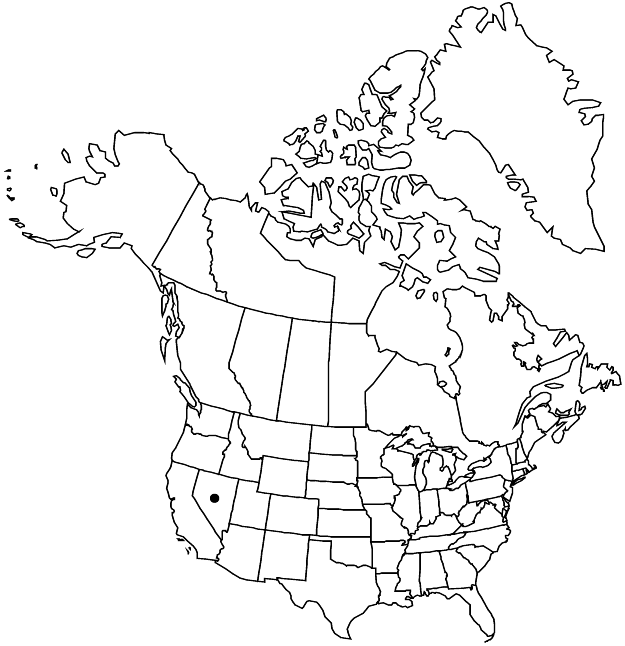Eriogonum rubricaule
Proc. Biol. Soc. Wash. 36: 181. 1923.
Herbs, erect, annual, (0.5–) 1–4 (–8) dm, glabrous, green to yellowish green. Stems: caudex absent; aerial flowering-stems erect, occasionally hollow and fistulose, 0.3–1.3 (–2) dm, glabrous. Leaves basal; petiole 2–3 (–4) cm, pilose-hispid; blade round to reniform, 1–2 (–3) × (0.5–) 1–3 (3.5) cm, pilose-hispid and bright green on both surfaces, margins plane. Inflorescences narrowly cymose, open, 5–30 (–50) × 5–35 cm; branches occasionally fistulose, glabrous; bracts 3, scalelike, 1–4 × 0.5–2 mm. Peduncles erect or nearly so, straight, slender, 0.2–0.3 cm, glabrous. Involucres campanulate, 2.5–3 × 2.5–3 mm, glabrous; teeth 5, erect, 0.5–1 mm. Flowers 1.5–2 mm; perianth pale-yellow to yellow with light green or reddish midribs, becoming yellowish red, glabrous, papillate in fruit; tepals monomorphic, narrowly ovate; stamens included to exserted, 1–2 mm; filaments glabrous. Achenes light-brown, 3-gonous, 2–2.5 mm, glabrous.
Phenology: Flowering May–Oct.
Habitat: Clayey, sandy or gravelly, often volcanic outcrops, washes, flats, and slopes, saltbush, greasewood, and sagebrush communities, pinyon-juniper woodlands
Elevation: 1100-1800 m
Distribution

Nev.
Discussion
Eriogonum rubricaule occurs on the eastern half of the pluvial Lahontan Lake basin of northwestern Nevada (Churchill, Esmeralda, Humboldt, Lander, Lyon, Mineral, Nye, Pershing, and Washoe counties). It tends to occur on or near the old lakeshore at the bases of the mountains, where it is infrequent to locally common.
Selected References
None.
Lower Taxa
"dm" is not declared as a valid unit of measurement for this property."dm" is not declared as a valid unit of measurement for this property."dm" is not declared as a valid unit of measurement for this property.